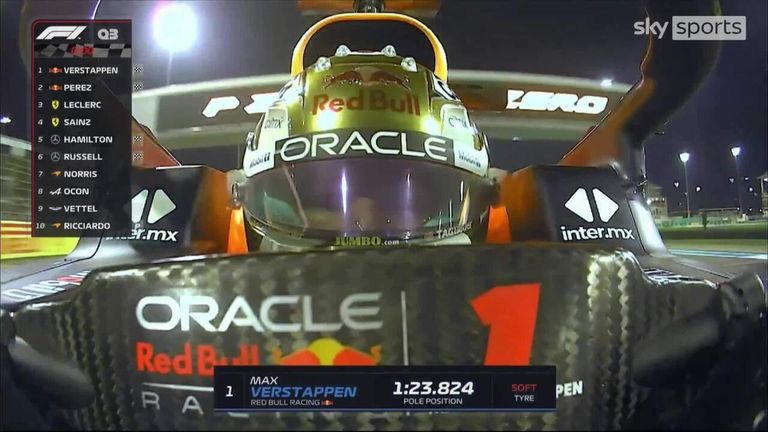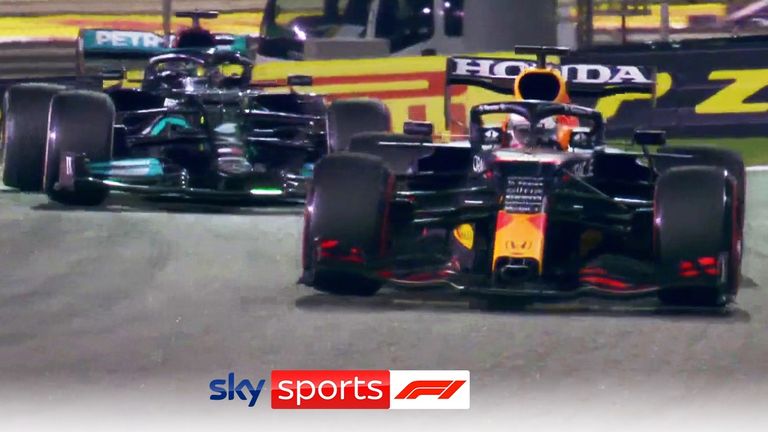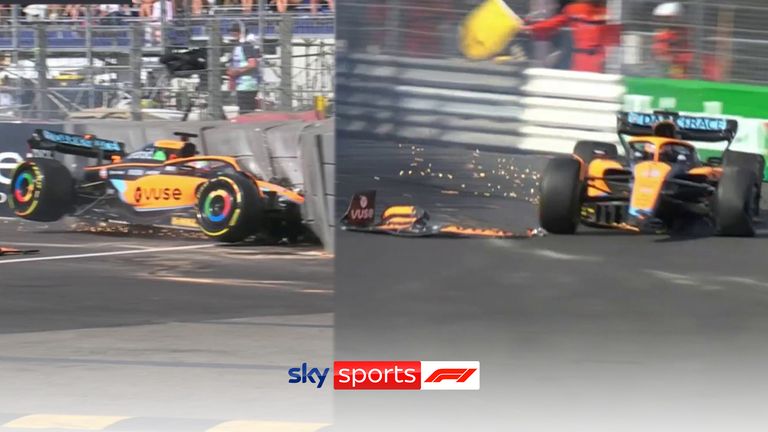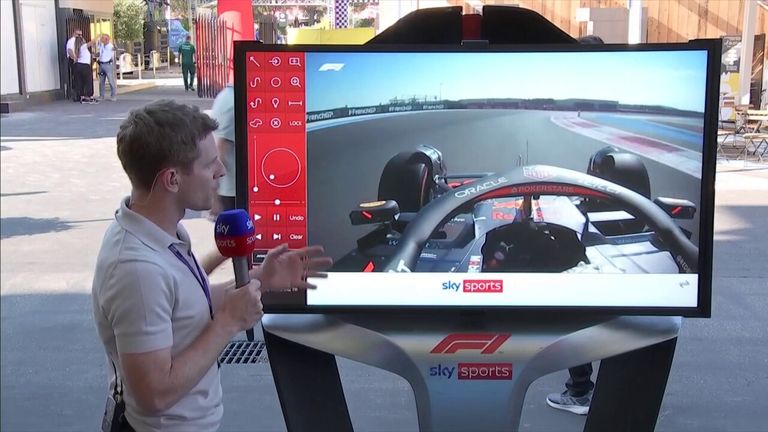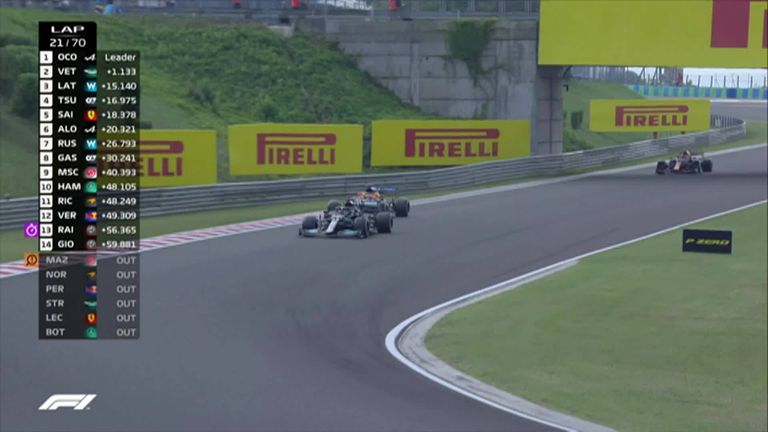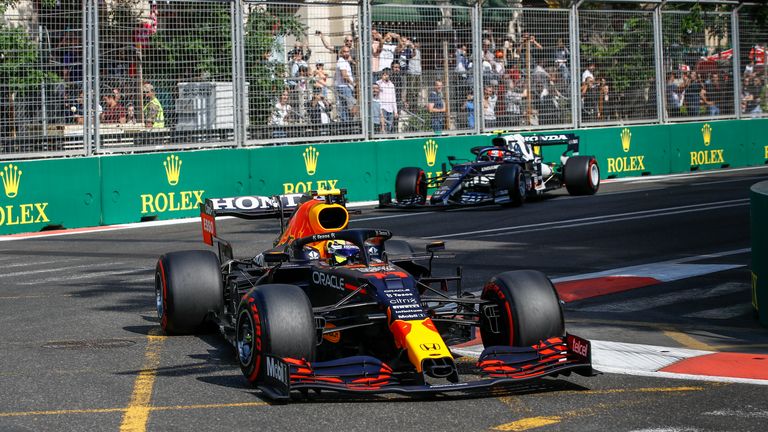[ad_1]
Formula One is back! Here’s David Croft to tell you everything you need to know in 60 seconds ahead of the first race in Bahrain. Catch all the action live on Sky Sports
Formula One is back! Here’s David Croft to tell you everything you need to know in 60 seconds ahead of the first race in Bahrain. Catch all the action live on Sky Sports
As Formula 1 returns for the 2023 season, we’ve explained the key phrases you will hear while following Sky Sports F1’s coverage of the sport’s biggest ever season.
The exciting, innovating and high-speed sport can be complex and confusing for existing fans, never mind new ones.
So, ahead of the opening race of the 2023 season in Bahrain this weekend, here are some F1 terms that can be confusing but crucial during a Grand Prix weekend.
Pole position
What you might hear – “Fernando Alonso is on pole position.”
What you might think – Where’s the pole?
What it actually means – The driver on pole position is the one who set the fastest lap time during qualifying. Usually, that will mean the driver on pole starts the Grand Prix at the front. However, during a Sprint weekend, the pole-sitter will start the Sprint on Saturday at the front, but the finishing order from the Sprint decides the starting order for the Grand Prix on Sunday.
DRS
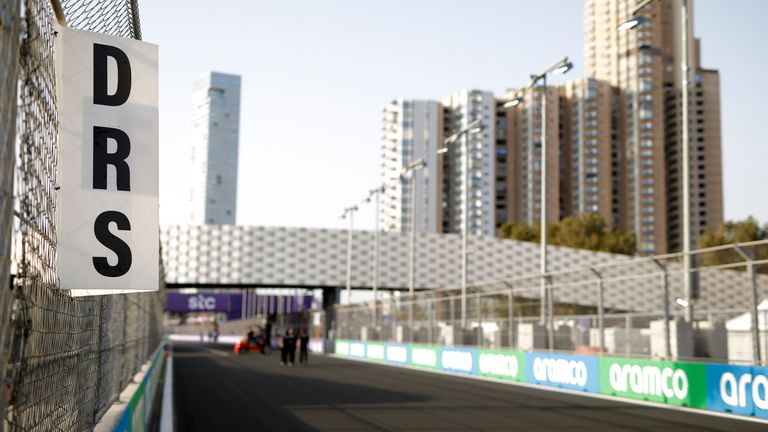

The DRS board tells drivers where they can activate the system
What you might hear – “Yuki Tsunoda has got DRS.”
What you might think – DRS could be a medical term or the decision review system, like cricket.
What it actually means – DRS stands for drag reduction system, which allows drivers to move a flap in the rear wing of their car that decreases the air resistance, giving the car up to 7.5mph more speed. The system is designed to deliver more overtaking, but can only be activated when a car is within one second of the car ahead.
Slipstream
What you might hear – “Oscar Piastri is in Alex Albon’s slipstream.”
What you might think – Is this a new type of streaming?
What it actually means – When a driver is directly behind another car, they can go faster because there is less air resistance, in the same way you might hide behind your friend so they block the wind getting to you. Getting a slipstream should enhance a driver’s chances of pulling off an overtake. Team-mates may also intentionally give each other a slipstream in Qualifying to help set the fastest lap.
Chicane
What you might hear – “And here they come through the swimming pool chicane.”
What you might think – Are they racing in the water these days?
What it actually means – A chicane is a sequence of corners that sees two changes in direction in quick succession. The swimming pool chicane is one of the sport’s most famous chicanes, as the cars thread their way through a remarkably tight section around Monaco’s swimming pool.
Oversteer/understeer
What you might hear – “Logan Sargeant prefers his car to oversteer.”
What you might think – I’m only used to one type of steering.
What it actually means – Depending on the setup of the car and how it is driven, a driver may either oversteer or understeer. If a car oversteers, the car is very sensitive to the driver turning the steering wheel, often leading to the rear of the car sliding – it looks cool, but can be slower, worse for the tyres and lead to accidents.
Understeer happens when the car won’t turn as much as the driver would like. This can lead to the car running wide and also going slower. The perfect car would have no understeer or oversteer, but this is not a perfect world, so sometimes the drivers and teams must choose between the two evils.
Going purple


The F1 timing screen shows data in purple if it is the best of anyone
What you might hear – “Max Verstappen is currently fastest, but Charles Leclerc is going purple.”
What you might think – Charles Leclerc must be angry.
What it actually means – When a driver completes a sector of a track faster than anyone, the timing screens will go purple for that sector. A purple sector would tend to indicate that a driver is on a highly competitive lap, which has a chance of being the fastest of the session or race.
Undercut/overcut
What you might hear – “Lewis Hamilton has undercut Carlos Sainz to take the lead.”
What you might think – Hamilton has done some sort of boxing move.
What it actually means – During a race, Hamilton has come into the pits earlier than Sainz, who he was behind on track. That allows him to go faster on fresh tyres, meaning by the time Sainz has pitted a lap or two later, he would come out of the pits behind Hamilton.
The overcut is the opposite of this and can happen when newer tyres make a car slower, so the driver that pits later comes out ahead. This would be likely to happen on a cold day when the tyres take a while to get up to a higher temperature and become hot and grippy.
Locking up


Lewis Hamilton locks up at Silverstone
What you might hear – “Lando Norris has locked up going into turn one.”
What you might think – Norris has been imprisoned – perhaps for speeding.
What it actually means – Norris has tried to slow his car down by braking, but there is not enough grip and his tyre is sliding across the tarmac. Lock ups usually create a puff of smoke and cause a car to run off line, while significant damage can be done to the tyre.
Apex
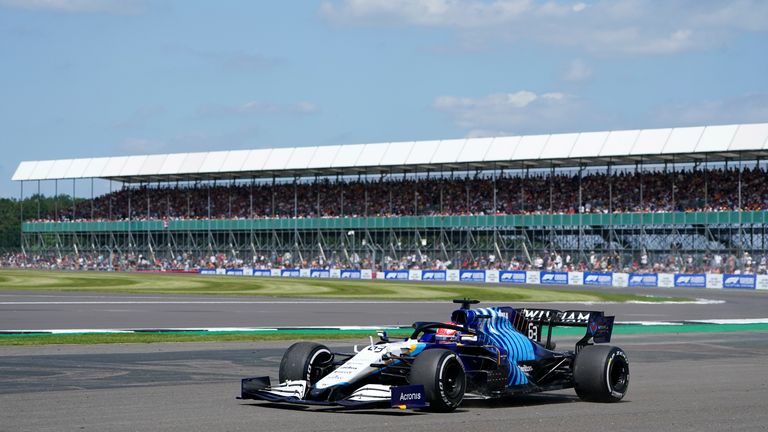

George Russell runs wide at the 2021 British Grand Prix
What you might hear – “Sergio Perez has missed the apex there.”
What you might think – Is this racing or climbing?
What it actually means – The apex is the point of the corner that the car should go through for no time to be lost – so if Perez missed the apex, he might have gone wide, losing time.
Backmarker


The blue flag tells slower cars to get out of the way of faster cars coming up behind
What you might hear – “The blue flags are going to need to come out soon as the leaders catch the backmarkers.”
What you might think – Who are they marking?
What it actually means – Backmarkers are the slower cars at the back that will often be lapped by the leading cars. A blue flag is shown to a backmarker to tell the driver to get out of the way as the faster car comes through. Backmarkers can sometimes interfere with racing between the leaders.
Degradation (Deg)
What you might hear – “The deg on that Ferrari today has been really bad.”
What you might think – Did I hear that correctly?
What it actually means – Degradation happens as tyres wear – or become damaged – during a stint, and there are two main types of degradation. ‘Blistering’ happens when the tyre overheats and bubbles up on the surface and ‘graining’ when the tyres slide across the tarmac, crumbling apart like a ball of mozzarella might. ‘Deg’, as drivers will often refer to it, can have serious consequences – see the video above!
Marbles
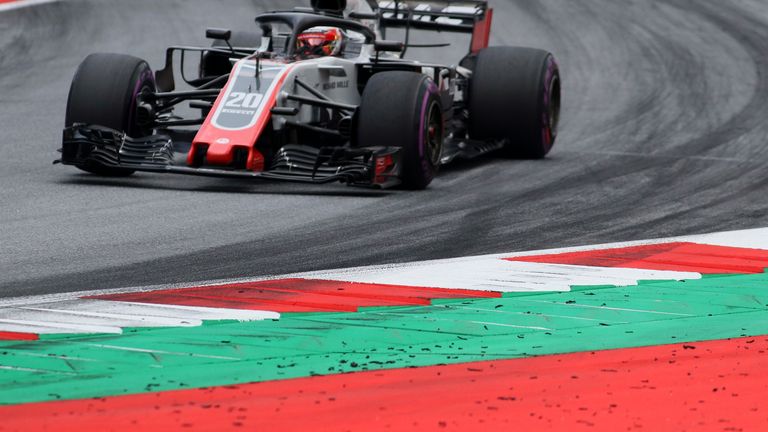

Tyre ‘marbles’ gather at the edge of the track
What you might hear – “Look at all the marbles on the track.”
What you might think – Has someone dropped their marble collection onto the track?
What it actually means – As the tyres fall apart – or grain – the bits of rubber can gather on the track, creating a surface which feels to the drivers like they are driving on marbles. There is not a lot of grip if you drive on marbles, but after the race, drivers will drive onto the marbles to pick up rubber and add to the car’s mass to ensure the car weighs enough to comply with rules.
Bottoming out
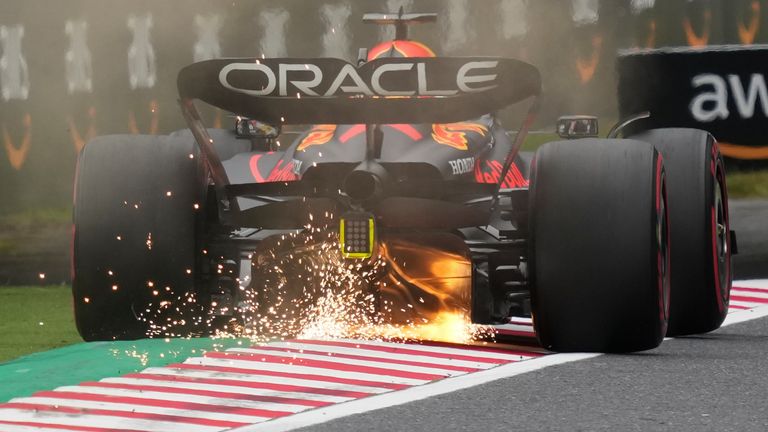

Sparks fly from Max Verstappen’s Red Bull
What you might hear – “George Russell has gone wide and bottomed out on the kerb.”
What you might think – It sounds a little rude.
What it actually means – F1 cars are really low because the closer the ground, the more speed drivers can take through corners. Often, the bottom of the car scrapes along the ground, bottoming out and creating sparks.
Delta
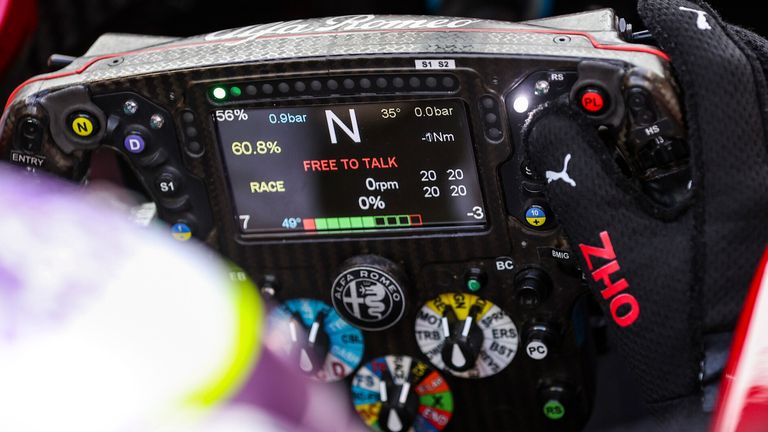

The driver can see on their steering wheel what the delta to their rivals is
What you might hear – “The soft compound of tyre has a delta of half a second to the hard compound.”
What you might think – Isn’t delta part of the Greek alphabet?
What it actually means – You’d be correct. Delta is part of the Greek alphabet, but also means difference. So in the example above, the softer tyres are quicker than the hard tyres by half a second per lap. Delta might also be used to describe the difference in pace between different drivers or cars.
Parc ferme


Teams can make very limited changes to the cars when they are in parc ferme
What you might hear – “The cars are in parc ferme conditions”
What you might think – It’s hard enough understanding F1 without needing to speak French!
What it actually means – It is French for secure park. After qualifying, an expensive car park is created with no maintenance allowed to take place on cars before the race without the permission of the FIA – F1’s governing body. FIA officials scrutineer the cars to ensure no changes are made that shouldn’t be.
require.config({“shim”:{“facebook-sdk”:{“exports”:”FB”}},”baseUrl”:”
require([‘skysports_digrev’, ‘sdc-site-pub-sub’], function (appController, pubsub) {
window.sdc = window.sdc || {};
pubsub.init(window.sdc);
appController.init();
});
[ad_2]
Source link

